Standard Work Combination Sheet / SWCS
A Standard Work Combination Sheet (SWCS) is also known as a Standard Work Combination Chart, or a Standardized Work Combination Table. Regardless of what you call it, it is one of the most critical documents to your Lean success.
Standard Work Combination Sheets goes hand-in-hand with Standard Work Sheets. In essence, the Standard Work Combination Sheet shows workflow on a graph and clearly depicts:
- walking
- waiting
- machine time
- operator cycle time

The Standard Work Combination Sheet has many uses:
- As a training
- It provides a standard that can be clearly communicated to employees during the training process.
- The Standard Work Combination Sheet provides employees with a quick and easy refresher when posted in a work cell. They can glance up and check that they are doing the process correctly. This is especially important as Lean takes hold and employees rotate jobs more frequently.
- As a quality When a problem is discovered, the first step should be to confirm that the process is being consistently followed. The Standard Work Combination Sheet makes it easy to audit an operation.
- As a management tool. The Standard Work Combination Sheet helps managers:
- As a continuous improvement The Standard Work Combination Sheet, to the experienced eye, screams out incidents of waste. When this waste is easily identified, it is much more likely to be eliminated.
Directions for Completing Your Standard Work Combination Sheet
- Fill out all header and footer information.
- Coordinate the numbers with the steps shown on the Standard Work Sheet. The two documents should go together.
- Show only one operator per sheet.
- Make sure to clearly mark the takt time on the Standard Work Combination Sheet.
- Don’t forget that the operator has to walk back to the starting point.
- Write in your name, and get the Standard Work Combination Sheet reviewed by the leader who is responsible for the work area.

Standard Work Combination Sheet Tips, Tricks, and Warnings
- A computer-generated Standard Work Combination Sheet looks nice (see below), but people are reluctant to change them. If you want to create them on a computer, make sure you also hang a red pen near it once it has been printed. That way, employees can mark changes as they make improvements to the process.
- Use an action verb in the “Step Description” box. It reduces confusion later.
![]()
Putting the Standard Work Combination Sheet to use…
- Don’t forget to download the free Standard Work Sheet to go with it!
- We’ve also got an article that might interest you about how to structure your Standard Work to support the operators on the shop floor.
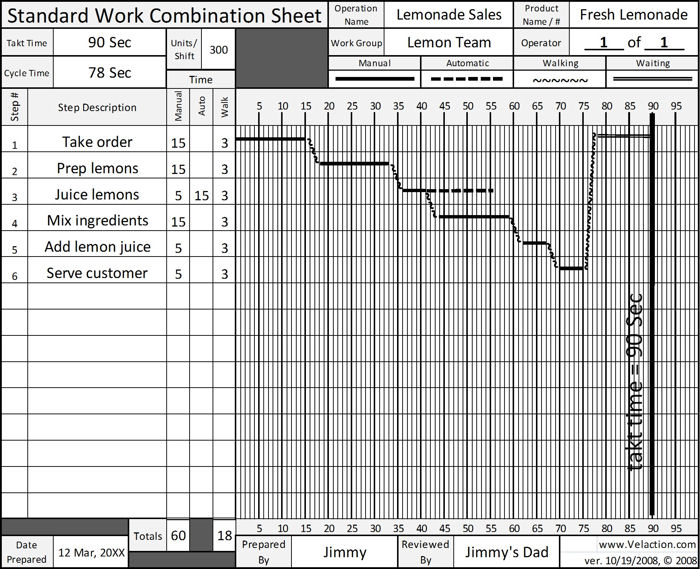
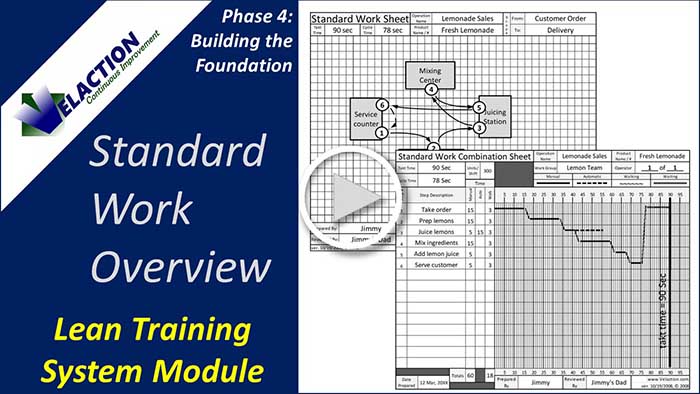
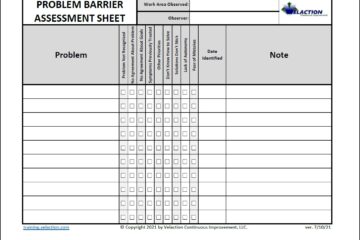
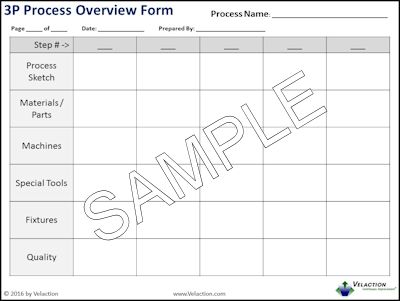
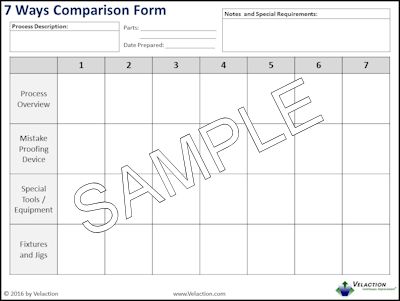
9 Comments
Shannon Spence · May 22, 2020 at 11:43 am
Do you have standard work sheet that captures 1/10 of a second? Do you directions on how to fill it out also?
Jeff Hajek · May 29, 2020 at 9:38 pm
No. I only have this form with the one second breakdowns, but I suppose you could adjust the scale.
My only comment would be that I can’t really think of a useful application for that. My guess is that you want to use this for a CNC machine or other automated process, but that really isn’t the purpose. It is specifically designed for people, and humans just aren’t precise enough for tenths of seconds to matter much.
Sorry. Hope the explanation helps.
Jeff
richie · December 18, 2011 at 8:55 am
Hi Jeff
Tried to purchase the Structured standard work, on going to the billing address there wasn’t the country i live in, United Arab Emirates.
what can i do in this circumstance, thanks
Richie
Jeff Hajek · December 18, 2011 at 9:00 am
Richie,
I’ve added the United Arab Emirates to the country list. You should be able to order now.
Thanks for your interest.
Jeff
Tom Miller · December 17, 2010 at 10:08 am
Do you have a STANDARD WORK COMBINATION SHEET application that allows me to fill in the work and machine elements and generate the graphic representations automatically? I want to know whether or not my proposed process falls within expected cycle time.
Jeff Hajek · December 17, 2010 at 10:20 am
Tom,
Sorry, this is the only sheet I have. I try to keep them simple so more people can modify them. Seems like the more bells and whistles I add to forms, the less they get used.
Sorry I couldn’t help more. If I start hearing that as a need from other people, though, I’ll look into adding that functionality.
Jeff
rashika shetty · November 1, 2011 at 3:21 am
thnks
rashika shetty · November 1, 2011 at 3:22 am
wht is persentage load chart
Jeff Hajek · November 1, 2011 at 9:11 am
Rashika,
A percent load chart or operator loading chart (as I call it) is a way of comparing cycle times to the takt time to give a visual representation of how well balanced a production line is. It is a bar chart with a line drawn at the takt.
I currently don’t have any info posted on this, but it is on my rather lengthy list of things to do.
Thanks for visiting.
Jeff